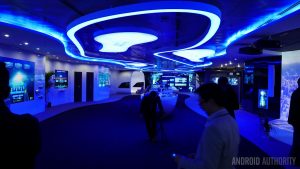To upgrade the company image is financially and strategically demanding. Huawei, a Chinese smartphone company, has captured the media’s attention because its transformation is conspicuously successful.
Huawei, as cited by CNN, used to be “a brand of low-end, cheap smartphones” that satisfies the “ant tribe community”, constituted of young individuals who share the demand for advanced electronic devices but are not affluent enough to afford them.
Therefore, it is astonishing to know that Huawei has climbed up the ladder, becoming the third most powerful mobile firm under Apple and Samsung. Huawei makes such progress by discovering new customer segments and serving them with products that represent the company’s new value proposition.
One of the first key steps Huawei took was to build connection with high-profile partnerships. For example, Huawei had invited Leica, a German photography company, to design the duel lenses for its smartphone. Huawei also brought in Swarovski for fashionable inputs for its smartwatch.
In the meantime, Huawei invested heavily in ad campaigns. In an effort to win the favor of the European customers, Huawei asked popular European soccer teams and athletes to sponsor for the brand. Aiming to reinforce its honorable image, Huawei put up its ads exclusively on flagship stores in downtown and often the banners cover the entire building.

“Aesthetic Design Centre” in Paris— Huawei aims to improve customer’s shopping experiences
However, feedbacks somehow got stuck with the fact that Huawei “lacks the cachet or consumer loyalty that Apple and Samsung do.” A researcher stated that customers continue “upgrading their phones to an iPhone6S or iPhone 7” because they are attached to App Store (Ana Ablaza, 2016).
Huawei has also been working hard on product innovations, which includes water-resistant features, noise reduction, low electromagnetic radiation…etc. But are they attractive enough to gain customers from Apple or Samsung? According to “Rule of Three and Four” by Bruce Henderson, “all except the two largest rivals will be losers.”
Huawei had beat Apple once with the sales in China, and salesmen at some European smartphone shops are already advising customers that “maybe Huawei is better” than Samsung (Goralczyk). A Huawei phone costs 2000RMB, while an iPhone 7000RMB. But many Huawei users had purchased their phones at a much lower price— around 300 RMB. Whether or not Huawei’s new market orientation deters its most desperate customers is not clear.
Furthermore, there are no statistic about the constituent of Huawei buyers— it is possible that while less affluent “ant tribes” and less demanding elder individuals find Huawei satisfying, the young generation that grows up on Samsung or Apple products and those who are already loyal to either of them won’t give Huawei a chance.
[word count: 437]
Work cited
Shepard, Wade. “China’s Huawei ‘Growing Up’ To Become The World’s No. 1 Smartphone Brand.” Forbes. Forbes Magazine, n.d. Web. 11 Oct. 2016.
Stout, Kristie Lu. “Would You Buy a Huawei Smartphone?” CNN. Cable News Network, n.d. Web. 11 Oct. 2016.
By Adopting the Innovative User-scenario-based Design, We Have Been Able to Develop Products That Are Easy to Install and Use. Based on Our In-depth Understanding of User Scenarios, We Applied Ergonomics Engineering in Product Design to Make Our Products Conform to the Engineering Habits and Skill Requirements of Users. “To Receive a Timely & Appropriate Reply, Please Select a Field for Your Query.” Customer Satisfaction Management. N.p., 2014. Web. 11 Oct. 2016.
Ablaza, Ana. “Huawei Smartphones SurpassApple IPhones’ Sales in China.” Yibada RSS. N.p., 2016. Web. 11 Oct. 2016.